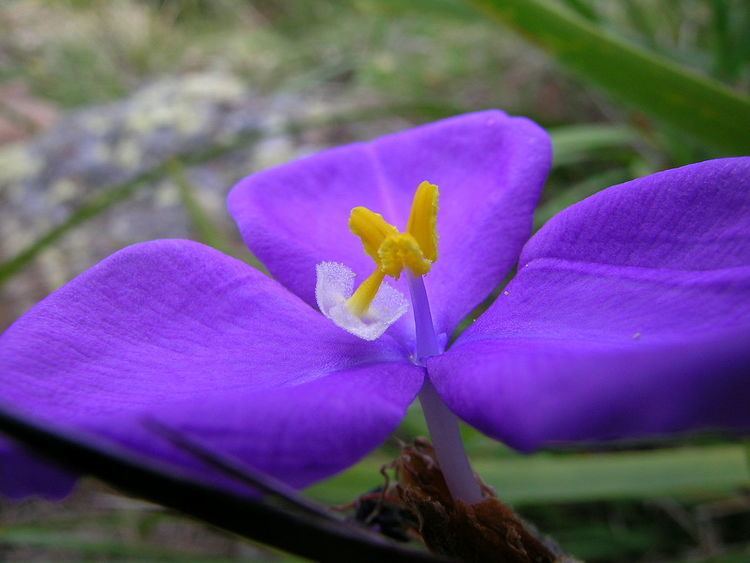Rank Species | ||
 | ||
Similar Patersonia, Patersonia fragilis, Dillwynia retorta, Caustis flexuosa, Dampiera stricta | ||
Patersonia sericea, commonly known as the purple flag, native iris, silky purple flag or native flag is a species of plant in the iris family Iridaceae which is endemic to eastern Australia. It is relatively easy to cultivate, and even the type specimen provided to the taxonomist, Robert Brown was "...furnished us by Messrs. Lee and Kennedy, of Hammersmith, [West London] who received the seeds, from which they raised it, from Port Jackson".
Contents
Description
The purple flag is a densely-tufted perennial herb growing to a height of about 60 cm. It has stiff, erect grass-like green leaves 15–60 cm long and 2–6 mm wide, that are finely stiated, glabrous except for the margins which have fine hairs and near the base which is covered with short white hairs. The flower stalk is 3–55 cm long and the petals (strictly outer tepals) are roughly oval in shape, 20–30 mm long, 15–25 mm wide and blue-violet in colour. The flowers appear in spring and summer and each lasts for less than a day.
Taxonomy and naming
Patersonia sericea was first described in 1807 by Robert Brown in Curtis's Botanical Magazine. The specific epithet (sericea) is derived from the Latin word sericus, "Chinese" or by extension "made of silk", referring to the hairs at the base of the juvenile leaves.
Distribution and habitat
The purple flag occurs in Queensland, New South Wales and Victoria (Australia) where it grows in dry sclerophyll forest, woodland and heath, preferring sandy, well-drained soil on the coast and ranges.
Conservation
Patersonia sericea is not considered to be at risk in the wild.
Cultivation
The purple flag is a reliable species in cultivation, thriving in hot, dry situations and is also frost tolerant. It is useful grown en masse in a bed of perennial plants.
Ecology
Patersonia sericea is used as larval food by two species of butterfly, the eastern iris-skipper (Mesodina halyzia) and montane iris-skipper (Mesodina aeluropis).
